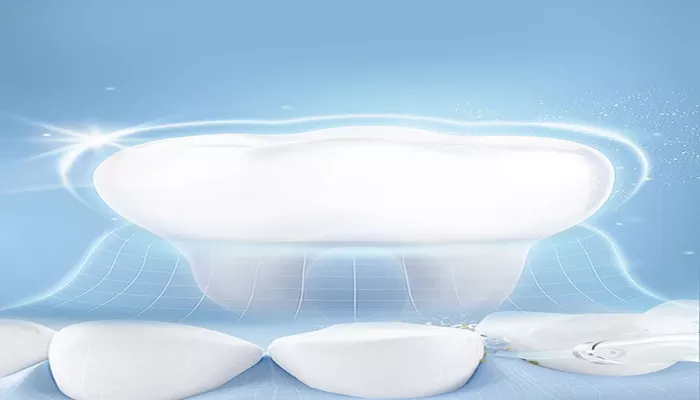Teeth whitening is a popular cosmetic procedure. Many people desire a brighter smile, and some may consider using bleach to achieve this goal. However, using bleach directly on teeth can be dangerous and is not recommended by dental professionals. In this article, we will explore the reasons why putting bleach on your teeth can be harmful, the effects of bleach on oral health, safer alternatives for teeth whitening, and best practices for maintaining a bright smile.
Understanding Bleach
1. What is Bleach?
Bleach is a chemical compound that is commonly used as a disinfectant and whitening agent. The most common type of bleach used for cleaning and whitening is sodium hypochlorite. While bleach can effectively kill bacteria and remove stains from surfaces, it is not safe for use in the mouth.
2. How Does Bleach Work?
Bleach works by breaking down the chemical bonds in stains, effectively removing them from surfaces. This property makes it useful for cleaning and disinfecting household items. However, the same mechanism that allows bleach to remove stains can also damage tissues in the mouth.
Why Using Bleach on Teeth is Dangerous
1. Damage to Tooth Enamel
Tooth enamel is the hard, outer layer of teeth that protects them from decay and damage. Bleach is highly corrosive and can erode enamel. When enamel is damaged, it can lead to:
Increased Sensitivity: Exposed dentin can cause pain or discomfort when consuming hot, cold, or sweet foods and drinks.
Higher Risk of Cavities: Weakened enamel makes teeth more susceptible to decay.
Aesthetic Issues: Thinning enamel can lead to discoloration and an uneven appearance.
2. Soft Tissue Damage
Bleach can also harm the soft tissues in the mouth, including gums and the lining of the cheeks. When bleach comes into contact with these tissues, it can cause:
Burns and Irritation: Bleach can cause chemical burns, leading to pain and inflammation.
Infections: Damaged soft tissues can become infected, leading to more serious oral health issues.
3. Toxicity Concerns
Ingesting bleach, even in small amounts, can be toxic. If bleach is applied to teeth, there is a risk of swallowing some of the substance. Symptoms of bleach ingestion may include:
Nausea and Vomiting: Ingesting bleach can irritate the stomach lining.
Respiratory Issues: Inhaling bleach fumes can lead to coughing, throat irritation, and difficulty breathing.
Long-Term Health Risks: Prolonged exposure to bleach can have serious health consequences.
The Misconception of DIY Teeth Whitening
1. Popularity of Home Remedies
Many people search for DIY teeth whitening solutions, believing they can achieve professional results at home. Common home remedies include:
Baking Soda: Often used for its mild abrasive properties.
Hydrogen Peroxide: Sometimes used as a whitening agent, but it must be diluted properly.
Vinegar: Used for its acidic properties, but it can erode enamel.
While some home remedies may provide mild whitening effects, they can also pose risks if not used correctly. Using bleach as a DIY whitening solution is especially dangerous and should be avoided.
2. The Role of Professional Whitening
Dental professionals offer safe and effective whitening treatments. These treatments use controlled concentrations of hydrogen peroxide or carbamide peroxide, which are much safer than bleach. Professional whitening options include:
In-Office Whitening: A dental professional applies a high-concentration whitening agent directly to the teeth, often with protective measures to safeguard gums and soft tissues.
At-Home Kits: Dentists can provide custom trays and lower-concentration whitening agents for safe use at home.
Safer Alternatives for Teeth Whitening
1. Over-the-Counter Whitening Products
Many over-the-counter products are designed for safe teeth whitening. These include:
Whitening Toothpastes: These contain mild abrasives and chemical agents to help remove surface stains.
Whitening Strips: Thin, flexible strips coated with a whitening gel that can be applied to teeth for a specified duration.
Whitening Gels: These can be applied with a tray or brush and are available in various concentrations.
2. Professional Whitening Treatments
For those seeking more significant results, professional whitening treatments are the best option. Dentists can tailor treatments based on individual needs, ensuring safety and effectiveness.
3. Natural Whitening Methods
Some natural methods can help maintain a bright smile without the risks associated with bleach. These include:
Regular Brushing and Flossing: Maintaining good oral hygiene is essential for preventing stains.
Dietary Choices: Limiting foods and beverages that stain teeth, such as coffee, tea, and red wine.
Hydration: Drinking plenty of water helps wash away food particles and bacteria.
Maintaining a Bright Smile
1. Good Oral Hygiene Practices
To keep teeth white and healthy, practice good oral hygiene:
Brush Twice Daily: Use a fluoride toothpaste and brush for at least two minutes.
Floss Daily: Flossing removes plaque and food particles from between teeth, preventing stains.
Use Mouthwash: An antibacterial mouthwash can help reduce plaque and freshen breath.
2. Regular Dental Visits
Regular check-ups and cleanings with a dentist are crucial for maintaining oral health and a bright smile. Dentists can remove surface stains and provide professional advice on whitening options.
3. Avoiding Staining Agents
To prevent staining, consider limiting:
Coffee and Tea: Both beverages can cause significant staining.
Red Wine: The pigments in red wine can stain teeth.
Colored Foods: Foods like berries, sauces, and certain spices can also contribute to discoloration.
Conclusion
In conclusion, putting bleach on your teeth is not only ineffective but also dangerous. Bleach can damage tooth enamel, irritate soft tissues, and pose serious health risks. Instead of using bleach, individuals seeking whiter teeth should consider safer alternatives, such as professional whitening treatments or over-the-counter products specifically designed for dental use.
Maintaining good oral hygiene and visiting a dentist regularly are essential for keeping teeth healthy and bright. If you have questions about teeth whitening or the best options for your needs, consult with a dental professional. They can provide personalized advice and help you achieve the bright smile you desire without the risks associated with bleach. Remember, a healthy smile is a beautiful smile!
Related topics:

